Table of Contents
Persuasion techniques psychology recommends are often used by US Presidents and studied to understand how voter persuasion trends evolve.
The Trump campaign is no different. His campaign often utilizes a variety of persuasion strategies. His speeches, peer-to-peer texting campaigns, and social media posts actively use persuasion methods- often with satisfactory results.
Take these text messages, for example.

In a matter of hours, the Trump campaign sent out several texts, all with different messages in them. It is interesting to note the two persuasion techniques the campaign used to nudge people to donate.
One message uses the persuasion technique to develop a sense of scarcity- I’m giving the first 20,000 patriots a FREE GIFT! 15,000 already claimed. Donate 35$ to claim NOW.
This message shows that only 5000 gifts are now up for grabs, and supporters are likely to donate on the link quickly if they want to play their chance.
The second message creates a liking among supporters by telling them they are the Trump campaign’s strength. Trump doesn’t have mega-donors, but he has YOU!
Some feel such persuasion techniques psychology recommends are aggressive, but others may find such forthright appeal of support convincing.
Please note: We do not endorse any political party or ideology, and these messages are only used as examples of various persuasion techniques and should be taken only in that context.
Let’s have a look at another example.
In 2019, Andrew Yang’s campaign called off its phone banking efforts due to lacking participants. When they announced this on Reddit, one volunteer pointed out how they could have avoided this.

According to this user, it was only a matter of acknowledging their efforts and creating a sense of liking to ensure volunteers don’t drop out.
If you want your campaign to succeed, there are 6 persuasion techniques you must adopt. These psychology tactics are useful for:
- Donation appeals
- Volunteer outreach
- GOTV
- Marketing a campaign or product
- Social media campaigns to increase subscriptions/followers
- Gathering subscribers through SMS opt-in
- Making a sale
- Getting petition signatures
What are the 6 persuasion techniques?
Dr. Robert Cialdini, noted the six principles of persuasive techniques that influence people. He conducted “undercover” research with local businesses, fundraising organizations, and telemarketing firms to understand the influence of these persuasion strategies and how you can apply them.
The professor puts forth these six persuasion techniques psychology supports:
- Reciprocity
- Scarcity
- Authority
- Commitment and Consistency
- Liking
- Consensus
Let’s discuss them by looking at a real-life example for each persuasion method and understanding how to implement them in your texting, calling, or social media campaigns.
Reciprocity – Persuasion techniques psychology recommends #1
Cialdini’s principle of reciprocity says that humans are wired to treat others as they are treated. If you want a favor from them, it bodes well to offer them something before.
Take Spotify, for example.
Instead of asking you to pay for a subscription right at the beginning (which is unlikely to work given that you have numerous other streaming options), they let you play all the songs you want, popping their subscription ads after every few tracks. Additionally, they also offer a free trial.
This can make the user feel
- The need to get the most out of the app
- Obliged to subscribe because of the frequency of ads or
- Happy to subscribe since they already had a satisfactory trial of the service
Users are more likely to pay for a subscription after they have fallen in love with the app. And this type of persuasion psychology (in the form of a free trial) has worked marvelously for them, with a 29% increase in year-on-year subscriptions in 2019.
Another form of the reciprocity persuasion technique is the hot-hand phenomenon. People tend to believe in streaks of success. If you won one hand at poker, you would assume that the next round will also be successful.
Creating that sense of achievement and success will increase the chances of participation or response from your audience.
For instance, the use of particular words to convey that the recipient is special and has achieved, won, or succeeded in something can increase participation.
But remember, hot-hand persuasion strategies will work for you only if you have earned the trust of your supporters. If you are yet to establish that relationship, you risk being marked spam.
Pro Tip:
What psychology says about persuasive writing:
Offer something of value and exclusive to your customers, donors, or voters before you make your ask. Convey the message,
- “Hey, we’re offering something huge to you. May we ask for a small favor in return?” Or
- “Hey, you have been shortlisted in this contest. Do this action to continue your participation.”
| Example of social persuasion for political campaigns | Sen. Travis: Hi Jake, volunteers like you have always been our strongest pillars. As a thank you, I am giving all volunteers The North Face coupons. Volunteer at least 3 hours/week until Nov 3rd and the gift is yours! Click Senatortravis.com/volunteer to register. |
| Example of social persuasion for nonprofits | Congrats, Jane! You have been shortlisted for our giveaway ruffle. First 100 stand a chance to win sportswear coupons and 5 lucky winners get a Kindle! Donate $30 to bit.ly/catcare to enter the contest. |
| Example of social persuasion for businesses | “Hello, Sam. I am Tanvi from Amara spa. Is this a good time to talk?” “Sure, Tanvi, go ahead.” “Thanks! We are offering an all-inclusive spa day to all our new members. This typically costs between $250-300. But we are offering it for free during the first week of October.” “Alright, what’s the catch?” “The offer is only for new members, and membership costs $50 monthly. You can avail of more such discounts every month. Would you be interested in joining our member list?” “That sounds like a deal. Count me in.” |
Read Also: The Persuasive Calling Cookbook For Cold Calling Success
Scarcity – Persuasion techniques psychology recommends #2
“Offer valid till stocks last.”
“Sale ends tonight.”
“Your last chance to make your voice heard.”
“Only a few hours left to vote.”
If these sentences give you a sense of urgency and inspire you to act, the persuasion technique of scarcity is working.
This is the classic demand Vs. supply principle wherein a product or service’s cost (or value) diminishes when it is abundantly available. But when the supply is much less than the demand, the same product becomes much more expensive.
How do you utilize this persuasion technique of psychology? If the scarcity doesn’t exist, create an illusion of it!
Pro Tip:
There are four ways you can use scarcity to your benefit:
- Scarcity of time – Fix a limited time to the offer (Eg: Season sales, midnight sales, last-minute GOTV efforts)
- Scarcity of number – Set a limit to discounted products, services, or gifts and convey them to customers. Even if the number is enormous, an apparent limit creates a sense of scarcity. (Eg: Offer valid till stocks last, only 1000 giveaway gifts, only the first 200 donors get free merch)
- Create competitions – Anything looks more appealing when you win it in a contest. Thus, competition becomes a great persuasion technique.
- One-of-a-kind specials – “People can’t handle the fact that they could miss out on something. They want to be part of the ‘club,’ the exclusive few,” says Steve Whyley, the 11K Club co-founder. The 11K club was a social experiment website that gave exclusive membership to 11,000 individuals with one “exceptional” benefit. The benefit wasn’t known, and yet, over 11,500 people applied!
This is a great example of a “one-of-a-kind special” persuasive technique. You can utilize this method in ways that serve your political campaign, nonprofit, or business the best.
An example of persuasion strategies for political campaigns
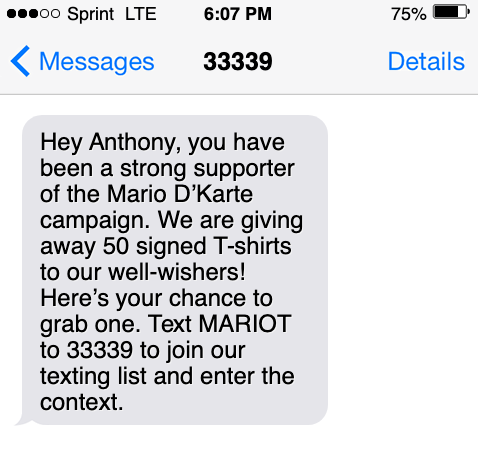
An example for nonprofits
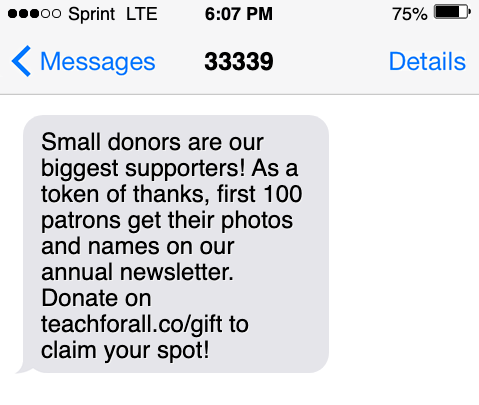
An example of persuasion strategies for businesses

Authority – Persuasion techniques psychology recommends #3
Organising for Change, a nonpartisan initiative of environmental groups, ran a GOTV campaign during the Canadian elections using text messages and phone calls. In addition to volunteers calling voters, OFC also partnered with researchers at the University of California Santa Barbara to contact voters, talk about environmental policies, and urge them to vote.
Having authoritative voices asking people to voice their environmental concerns worked in favor of the campaign. The OFC and their partner groups were able to increase voter turnout in some constituencies by 7%!
Cialdini’s authority principle of persuasion techniques psychology says that people tend to follow advice when it comes from experts or authorities with high credibility.
The credibility of researchers worked in favor of OFC, and similarly, you can partner with people of high authority or utilize the credibility of your staffers to your advantage. The right wording, as well as confident tones, can imply this credibility effortlessly.
If you find yourself sounding too ‘out of reach’ to your customers, try using the “even if” technique. This technique is especially helpful if your products or services sound complicated to use and you want to show how inclusive they are, even for amateurs.
The formula is – Your product/service + its value… [even if] customer objection.
Doodly – the doodle video creation software, uses this effectively in their tagline:
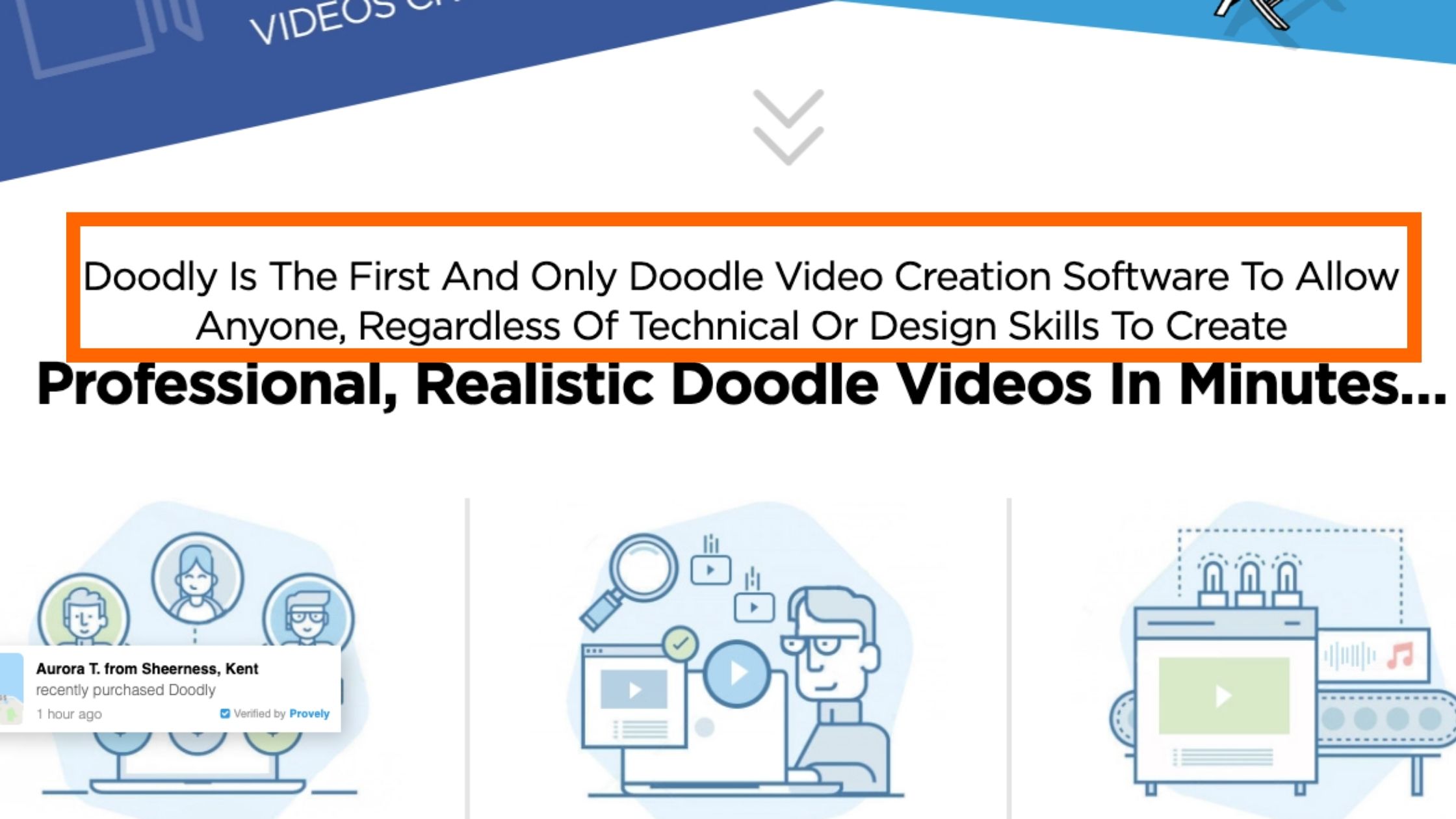
Pro tip:
Highlight your authority and credibility in your texts and calls so supporters understand authenticity. Three ways you can do this are:
- Mention the qualification of the caller or your team
- Talk about the impact you have created
- Highlight your experience with the current team.
| Example of persuasion methods for political campaigns | Economist and best-selling author J Franklin joins candidate Rose to discuss America’s economic future. Donate $25 to bit.ly/rose to attend the event and ask your questions to Rose and J Franklin first-hand! |
| Example of persuasion methods for nonprofits | 9 out of 10 doctors recommend Velcro shoes for the elderly. Don’t believe us? Know it straight from the horse’s mouth this weekend. Velcro hosts a member-only seminar to understand how shoes can affect health. Click velcro.co/member to join us. |
| Example of persuasion methods for businesses | 9 out of 10 doctors recommend Velcro‘s shoes for the elderly. Don’t believe us? Know it straight from the horse’s mouth this weekend. Velcro hosts a member-only seminar to understand how shoes can affect health. Click velcro.co/member to join us. |
Read Also: Scripts for a Voter Persuasion Call That Gets You Votes
Commitment and Consistency – Persuasion techniques psychology recommends #4
It is human nature to want to be (or at least appear to be) consistent with our previous actions. This is why, if you supported the Minnesota Vikings last season, you are most likely to cheer for them this time around, too- even if they are having a particularly bad season. That is the consistency persuasion technique.
- You may continue the support because of peer pressure (people may judge you for switching teams when the Vikings lose.)
- Or because you have a strong commitment and believe that rough patches are standard.
This human tendency towards consistency and commitment thus becomes an excellent persuasion technique that psychology studies endorse.
Donors, volunteers, or subscribers are likely to keep up their contributions due to commitment and consistency factors.
Similarly, being consistent with your messaging and asks increases your chances of retaining supporters. It also shows the commitment you have toward your cause.
Pro Tip:
Adopt the ladder of engagement model with your supporters for this persuasion strategy. Donors and supporters tend to continue their support- even when you have a bigger ask.
Ladder of engagement, also known as the “Foot in the Door” technique, is a psychological study born from Benjamin Franklin’s observation.
Franklin records an incident in his autobiography where he asked a stranger to lend him a book. Franklin returned it with a kind note, and the stranger made a point to approach him the next time they saw each other. Gradually, the stranger promised Franklin support in whatever manner, and they ended up being friends for life.
Similarly, persuasion techniques psychology recommends are:
- Begin with a small ask that doesn’t cost much.
- When you return the favor, you can increase your ask by a bit.
- Continue this until you get resistance, and then stick to the maximum ask that the individual is comfortable with.
Example for political campaigns
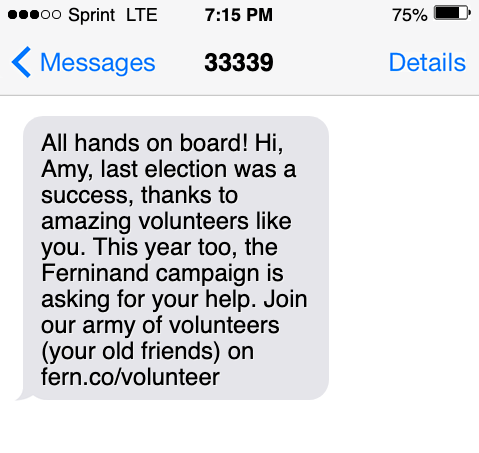
Example for nonprofits

Example for businesses

Persuasion Strategy of Liking – Persuasion techniques psychology recommends #5
We tend to like people who
- Are most like us
- Give us compliments
- Cooperate with us to achieve common goals
This “liking” persuasion technique of psychology has been the favorite of many a politician. And it works phenomenally.
Take the example of Princess Diana and her wild popularity.
The British royalty prides itself on etiquettes that separate them from the “ordinary people.” However, Lady Di stepped away from these norms of being a royal. Instead, she embraced children battling diseases, shook hands without gloves on, and openly showed her sporty side.

Because she portrayed herself as one among the people, she became the “people’s princess.”
Princess Diana used this popularity to endorse several causes, including HIV/AIDS awareness and campaigning against the use of landmines (also advocating to clear landmines used during wars). She could count on popular support for these causes because people associated her with themselves and liked her for it.
Thus, the “liking” persuasion technique becomes an effective way to show your camaraderie with a group and, in return, ask for their support.
Pro tip:
One way of increasing popularity among your supporters using this persuasion technique is to follow the “Social Identity Perspective.” This theory suggests that to be the prototype and leader of the group, you must
- Accentuate similarities with the in-group (your supporters)
- Highlight differences and contrasts with out-groups (your opponents)
Bernie Sanders is the perfect example of this.
He regularly rallies for climate change issues, women’s rights (highlighting his traits similar to his supporters), and against wealth accumulation by billionaires (highlighting differences against the out-group).
| Example of persuasion techniques for political campaigns | Hey Christin, it’s individual donors like you that are charging Victoria’s campaign this time! From waitress to Congresswoman, she has seen the same struggles as you. Now is our chance to make our voices heard through her. Donate $25 here: bit.ly/Victoria |
| Example of persuasion techniques for nonprofits | Why should you donate to All For One Charity? Because we understand donors’ hopes like no one else. You get regular updates about how YOUR gifts are making a difference. Right from when you donate to when your gifts reach the needy. Just like your online shopping. Cool, right? Try it out at AFOCharity.co/donate |
| Example of persuasion techniques for businesses | Following the COVID-19 lockdown, many businesses have let go of their employees. But not BigKart. We continued paying our staff, sometimes even if it incurred losses. Help us help our staffers. Donate to keep 100+ employees paid on bigkart.com/donate |
Consensus – persuasion techniques psychology recommends #6
You are on an international vacation with your family and are driving to the beach. You stopped at a signal when it turned red. It’s been well over a minute, and the light still hasn’t turned green. You now understand, as do other drivers, that the signal has malfunctioned.
What do you do?
Unless you have studied the countries’ traffic rules, chances are you will look around you to see what others are doing. If they are still stopping, you stop too. If they are moving ahead, you hit the gas.
This is exactly what the consensus persuasion technique is – communicating what everyone else is doing to direct your supporters in a certain direction.
This persuasion strategy works particularly well with on-the-edge voters or with new supporters who don’t completely trust you yet, by showing them that others like them support you or act a certain way or have a particular belief.
Amazon’s listing of “frequently bought together” or “People who viewed this also viewed” uses this persuasion technique of consensus to nudge customers to buy more items.
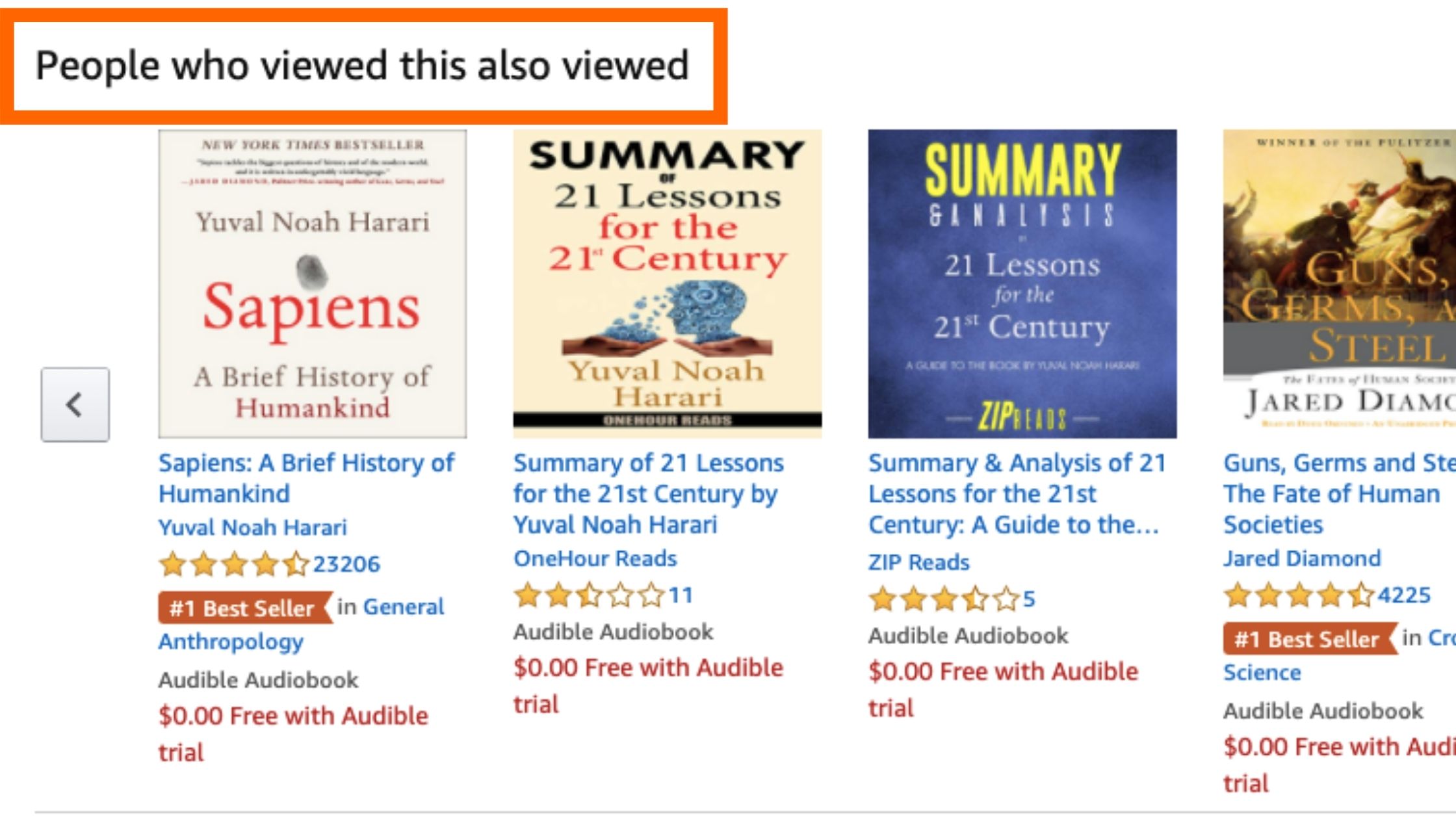
Pro tip:
Study your donors, customers, and supporters to understand what group they associate most prominently with. Take examples from these identifiers to have a consensus. Some critical categories that people identify strongly with are:
- Race
- Age/Generation
- Gender and sexual orientation
- Income groups
- Working status
- Neighborhoods
- Political ideology
- Nationality
- Social/environmental/economic concerns.
| Example for political campaigns | Hi Theresa, I’m Tanvi from Cafe Spring. Do you have a couple of minutes to spare? Hi Tanvi. Sure, go ahead. We are conducting a focus group study to understand why people are giving up meat. Five other customers who opted for our vegan menu have shown interest in participating. Since you too opted for this menu, we would be delighted to get your insight. That sounds great! Just tell me the time and date, and I will be there. |
| Example for nonprofits | Hi Archie, thank you for signing up to our SMS list. Did you know 7 out of 10 students from CalTech have volunteered at least once in their Uni days? Be a part of that great legacy, and join us today! Register on FeedTheYoung.org/volunteer |
| Example for businesses | Hi Theresa, I’m Tanvi, from Cafe Spring. Do you have a couple of minutes to spare? Hi Tanvi. Sure, go ahead. We are conducting a focus group study to understand why people are giving up meat. Five other customers who opted for our vegan menu have shown interest in participating. Since you, too, opted for this menu, we would be delighted to get your insight. That sounds great! Just tell me the time and date, and I will be there. |
Read Also: All-in-one guide to efficient voter persuasion
How to implement these persuasion techniques?
Invest in the right communication channels to convey your message to supporters and get them onboard.
- Mass texting tools: Help you reach thousands of opt-ins with a single click. This tool is perfect for the first conversation between you and your customers, voters, or donors.
- P2P texting tools: Cultivate your contacts with personalized communications. Use the aforementioned persuasion techniques psychology has proven to be effective and let your supporters continue their support.
- Call center software: For all the voters, donors, and customers who appreciate a personal, one-on-one conversation with you.
- Emails: A great tool to reach out to a wide audience and include detailed information about your next campaign.
- Social media: When you don’t want to limit your outreach to current supporters, social media is a non-intrusive and affordable way to touch base with thousands of prospects.
Persuasion is art and science at the same time. We covered the science of persuasion strategies for you, and now the baton of art is yours to take ahead.
Feature Image Source: Austin Distel/ Unsplash

